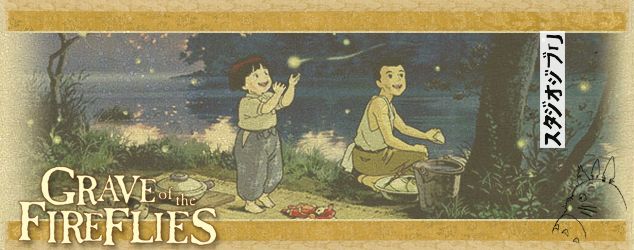In the enchanting universe of Studio Ghibli, where soaring castles and spirited forest creatures often define the landscape, one film stands as a stark, poignant departure: Isao Takahata`s 1988 classic, Grave of the Fireflies. This harrowing tale, now frequently re-released in meticulously crafted physical editions, serves as a powerful reminder of Ghibli`s profound thematic range and the enduring allure of collecting cinematic masterpieces.
A Glimmer Among Shadows: The Unforgettable Narrative
Unlike many of its whimsical counterparts, Grave of the Fireflies offers no fantastical escape. Instead, it thrusts viewers into the brutal realities of Japan`s final days in World War II, seen through the eyes of 14-year-old Seita and his four-year-old sister, Setsuko. Based on the semi-autobiographical short story by Akiyuki Nosaka, the film meticulously details their struggle for survival amidst bombing raids, food shortages, and the heartbreaking indifference of relatives. It`s a narrative that, quite deliberately, pulls no punches, portraying the devastating human cost of conflict with an unflinching honesty that resonates deeply.
While Studio Ghibli is often lauded for Hayao Miyazaki`s environmentalist parables and tales of youthful wonder, Takahata`s work here showcases a different, equally vital facet of the studio`s genius. Grave of the Fireflies explores themes of loss, resilience, and the fragility of innocence in a world consumed by war. Its emotional impact is legendary, leaving audiences with a profound sense of melancholy and a lasting impression of its stark, yet beautiful, depiction of human endurance.
The Art of Preservation: Why Physical Editions Still Matter
In an age dominated by digital streaming, the continued demand for physical media, especially collector`s items like Steelbook editions, might seem anachronistic. Yet, for a film of Grave of the Fireflies` stature, these editions represent more than just a purchase; they are an act of preservation. The latest Steelbook release from Shout Factory, for instance, isn`t just the film on Blu-ray and DVD. It`s a comprehensive package designed to honor its legacy. Collectors gain access to an array of bonus features: deep dives into storyboards, never-before-seen deleted scenes presented in their original storyboard form, extensive image galleries, a collection of vintage trailers, and insightful interviews with director Isao Takahata and the late, revered film critic Roger Ebert.
These meticulously curated editions transform a film viewing into an immersive experience, providing contextual depth that enriches appreciation for the animation, the narrative, and the historical backdrop. The tactile experience of a beautifully designed Steelbook case, often featuring unique artwork, elevates the film from a transient digital file to a tangible artifact, a piece of cinematic history to be proudly displayed.
The evolution of these physical editions themselves tells a story. Past releases, now out of print, showcased different artistic interpretations of the film`s cover. The current design, aligning with more recent Ghibli Steelbook releases like The Boy and the Heron, signifies a continued commitment to offering fans something fresh and collectible, ensuring that the film`s physical presence remains as dynamic as its emotional resonance.
Beyond the Fireflies: A Legacy of Diverse Storytelling
While Grave of the Fireflies stands apart, it is also part of a larger, illustrious tapestry that is Studio Ghibli. The enduring popularity of collector`s editions extends to the studio`s broader catalog, encompassing Hayao Miyazaki`s fantastical epics like Spirited Away and Princess Mononoke, and beloved adventures such as Howl`s Moving Castle and Kiki`s Delivery Service. Each film, with its distinct themes and visual style, contributes to Ghibli`s reputation as a purveyor of timeless animation that transcends cultural barriers.
The appreciation for Ghibli`s artistry also extends to related merchandise, from “All-in-One Edition” film comics — essentially beautifully presented collections of screenshots and dialogue — to deluxe hardcover editions of the novels that inspired films like Howl`s Moving Castle. These complementary items further cement the studio`s status as a cultural phenomenon, fostering a passionate community of fans eager to immerse themselves fully in these narrative worlds.
The Paradox of Preservation: A Final Reflection
There`s a subtle irony in the meticulous preservation of a film like Grave of the Fireflies. A story so deeply rooted in transience, in the fleeting nature of childhood, family, and life itself amidst wartime devastation, finds a permanent home in durable, collectible formats. It`s a testament to humanity`s innate desire to remember, to learn, and to keep stories alive, especially those that illuminate the darkest chapters of history with such profound artistry.
The continued availability and thoughtful presentation of Grave of the Fireflies in special editions underscore its irreplaceable position not just in Japanese animation, but in the pantheon of world cinema. It remains an “emotional rollercoaster,” as the original assessment aptly put it, one that cinephiles are keen to revisit, preserve, and share, ensuring its powerful message continues to resonate for generations to come.

